
Why our closeness to the sun does not dictate the seasons. Created by Sal Khan.
- Subject:
- Astronomy
- Physical Science
- Material Type:
- Lesson
- Provider:
- Khan Academy
- Provider Set:
- Khan Academy
- Author:
- Sal Khan
- Date Added:
- 07/13/2011

Why our closeness to the sun does not dictate the seasons. Created by Sal Khan.
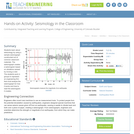
Students learn about seismology by using a sample seismograph constructed out of common classroom materials. The seismograph creates a seismogram based on vibrations caused by moving a ruler. The students work in groups to represent an engineering firm that must analyze the seismograph for how it works and how to read the seismogram it creates.

This cross-disciplinary course aims to understand the historical development and the current status of ideas and models, to present and question the constraints from the different research fields, and to investigate if and how the different views on mantle flow can be reconciled with the currently available data.
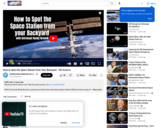
In this episode of ISS Science you'll learn how you can spot the ISS.
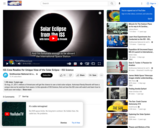
Astronaut Randy Bresnik will have a unique view as he watches from space. In this episode of ISS Science, find out how the ISS crew will watch and learn how to build your own eclipse.
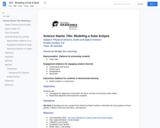
This lesson investigates the alignment of the Earth, the Moon, and the Sun during a solar eclipse and model that alignment with classroom materials.
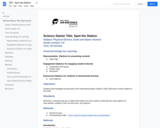
Students will investigate the geometry of the International Space Station's (ISS) orbit and its motion relative to the Earth.
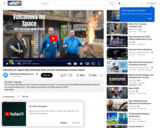
Did you know astronauts can see volcanoes erupting from space? Learn about this from NASA Astronaut Ricky Arnold and see a model volcano erupt.

To experience the three types of material stress related to rocks â tensional, compressional and shear â students break bars of soap using only their hands. They apply force created by the muscles in their own hands to put pressure on the soap, a model for the larger scale, real-world phenomena that forms, shapes and moves the rocks of our planet. They also learn the real-life implications of understanding stress in rocks, both for predicting natural hazards and building safe structures.
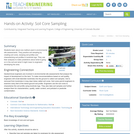
Students learn about one method used in environmental site assessments. They practice soil sampling by creating soil cores, studying soil profiles and characterizing soil profiles in borehole logs. They use their analysis to make predictions about what is going on in the soil and what it might mean to an engineer developing the area.
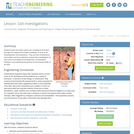
Students learn the basics about soil, including its formation, characteristics and importance. They are also introduced to soil profiles and how engineers conduct site investigations to learn about soil quality for development, contamination transport, and assessing the general environmental health of an area.
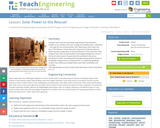
Students learn how the innovative engineering of photovoltaics enables us to transform the sun’s energy into usable power—electricity—through the use of photovoltaic cells. Watching a short video clip from “The Martian” movie shows the importance of photovoltaics in powering space exploration at extreme distances from the Earth. Then students learn that the photovoltaic technologies designed to excel in the harsh environment of space have the potential to be just as beneficial on Earth—providing electricity-generating systems based on renewable energy sources is important for our electricity-gobbling society. Two student journaling sheets assist with vocabulary and concepts.
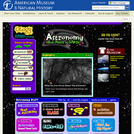
This OLogy activity gives kids a grounded way to understand the scale of the planets in our solar system. The activity begins with a brief overview that tell them why all planets are round and introduces them to the concept that the planets vary widely in size. Kids are then asked to create a model of the solar system using found objects that match the provided scale in inches for the planets. The activity ends with a series of challenges, which include arranging the planets according to size and distance from Earth.
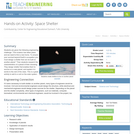
Students are given the following engineering challenge: "The invasion has taken place and we need to find a new home. To ensure your survival beyond Earth's occupation you must design a shelter that can be built on another planet." Then students research the characteristics of a planet of their choosing. They design shelter that enables them to survive on a new planet, and explain it in words to the rest of the class. This is a great activity to add to a unit on the solar system.

This lesson introduces students to the space environment. It covers the major differences between the environment on Earth and that of outer space and the engineering challenges that arise because of these discrepancies. In order to prepare students for the upcoming lessons on the human body, this lesson challenges them to think about how their bodies would change and adapt in the unique environment of space.
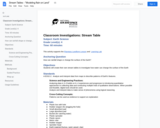
Stream Table activity in support of the Planetary Landforms Lesson and Learning Lab
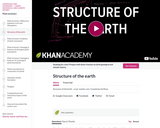
Structure of the Earth - crust, mantle, core. Created by Sal Khan.

Students build a model of the Sun-Earth-Moon system, exploring how the Moon revolves around the Earth, and the Earth around the Sun. Students play a memory game and learn some characteristics about the three objects.

The solar system is made up of the Sun, the planets that orbit the Sun, their satellites, dwarf planets and many, many small objects, like asteroids and comets. All of these objects move and we can see these movements. We notice the Sun rises in the eastern sky in the morning and sets in the western sky in the evening. We observe different stars in the sky at different times of the year. When ancient people made these observations, they imagined that the sky was actually moving while the Earth stood still.The Moon is a natural satellite of the Earth, meaning that it orbits around the Earth.It is the only place outside of the Earth that humans have ever been! We can often see the Moon on a clear night, but it does appear to change shape during the 29 days it takes to orbit the Earth.

The solar system is made up of the Sun, the planets that orbit the Sun, their satellites, dwarf planets and many, many small objects, like asteroids and comets. All of these objects move and we can see these movements. We notice the Sun rises in the eastern sky in the morning and sets in the western sky in the evening. We observe different stars in the sky at different times of the year. When ancient people made these observations, they imagined that the sky was actually moving while the Earth stood still. The Moon is a natural satellite of the Earth, meaning that it orbits around the Earth.It is the only place outside of the Earth that humans have ever been! We can often see the Moon on a clear night, but it does appear to change shape during the 29 days it takes to orbit the Earth.